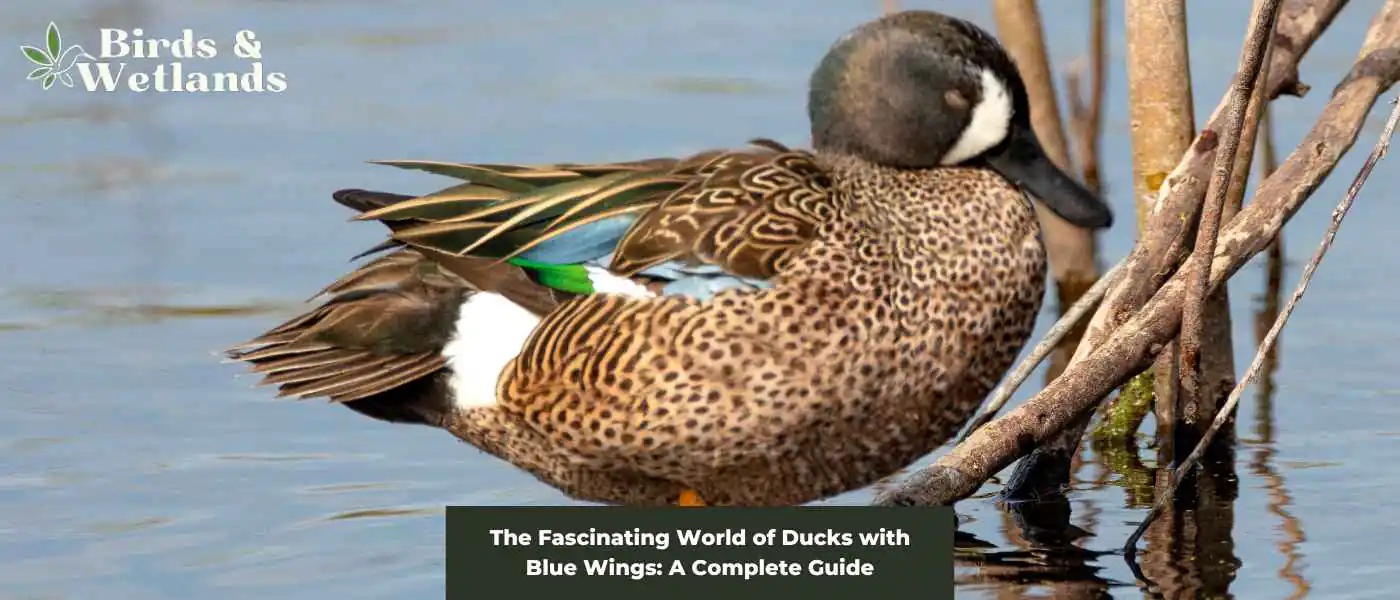Have you ever seen a duck with bright blue wings and wondered what kind of species it is? Blue-winged ducks are a fascinating group of birds that have captured the attention of birdwatchers and nature enthusiasts worldwide.
Seven blue-winged ducks exist worldwide. These ducks include blue-winged teal, cinnamon teal, garganey, northern shoveler, cape shoveler, red shoveler and Australasian shoveler. But for this blog post, we’ll focus on the blue-winged teals. So, let’s get started and discover the wonders of these beautiful birds!
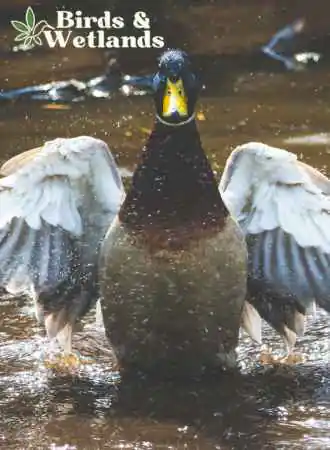
Description
The blue-winged teal (Anas discors) is a small dabbling duck found in North America.
The adult male blue-winged teal has a blue-gray head and neck with a purplish iridescence. It has a bold white crescent in front of the eyes and black speckles on its mostly buff-colored body.
The adult female blue-winged teal has a brown body that is coarsely marked with dark streaks and spots. It has yellow legs, a black tail and its head has a dark cap and eyeline and a white patch on the rear flank. The black bill of the female blue-winged teal is short and stubby and features a pale patch on each side of the base.
Both sexes of blue-winged teal have a blue wing patch, where the species got its common name.
In terms of vocalization, the female emits a soft quack.
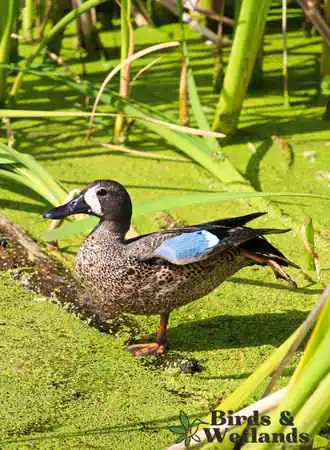
Diet
Blue-winged teals are predominantly herbivorous, subsisting mainly on seeds from various grasses, sedges, pondweeds, smartweeds, and other aquatic plants.
These dabbling ducks supplement their diets with animal matter during specific seasons. Snails, bivalves, aquatic insects, crustaceans, and other small aquatic invertebrates are crucial in their diet at different times of the year.
The blue-winged teal is not a picky eater and has adapted well to its environment to find sustenance. These small ducks are commonly found near wetlands, marshes, and other water sources, where they forage for food. It often skims the water’s surface with its beak, searching for plant materials and small invertebrates to consume.
Habitat
During the breeding season, the blue-winged teal nests near small freshwater lakes, swampy lakes, quiet rivers, and small streams in open areas. These habitats provide a mix of open water and emergent vegetation that can provide cover and food sources.
In winter, the blue-winged teal typically inhabits larger, shallow water surfaces. Its wintering habitat may include marshes, rice fields, salt and brackish waters, and swamps.
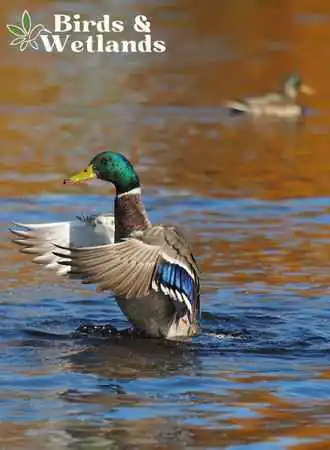
Breeding Range & Distribution
Blue-winged teal populations extend across much of North America, from the central and eastern parts of the United States to parts of northern Canada and northern Mexico.
In terms of population size, the blue-winged teal is considered the second most abundant duck species next to the mallard in North America. Its abundance is often credited to the species’ adaptability to various wetland habitats and breeding grounds, including shallow ponds, marshes, small lakes, swamps, and flooded fields.
The blue-winged teal breed in the northern prairies and parklands of the prairie pothole region of the northern Great Plains, which includes parts of North and South Dakota, Montana, and other neighboring states. This particular region is known for its abundance of shallow, seasonal wetlands that provide ideal nesting habitat for the species.
As fall approaches, blue-winged teal migrates south to its wintering grounds in the southern United States, Pacific and Atlantic coasts, Mexico, the Caribbean Islands and Central America. Most North American blue-winged teals spend winters in southern Texas.
Small groups may travel long distances through open ocean to northeastern Brazil in South America. They are among the first ducks south in the fall and the last ducks to fly back north in the spring migration.
Reproduction & Nesting
Courtship begins in late January to early February and breeding season for the blue-winged teal typically starts in May, when the weather is warm and the days are long. During this time, the female blue-winged teal constructs a nest in a concealed spot, usually in a dry location close to water. The nest is a shallow depression on the ground carefully hidden among tall grasses and built using vegetation along the shoreline.
Once the nest is complete, the female lays a clutch size of 8 to 11 olive-white or creamy eggs. The female will then incubate the eggs for about 23 to 24 days, using her own body heat to keep them warm.
The eggs hatch simultaneously and young ducks may leave the nest 24 to 48 hours from hatching. For the first few weeks, the female tends to the ducklings.
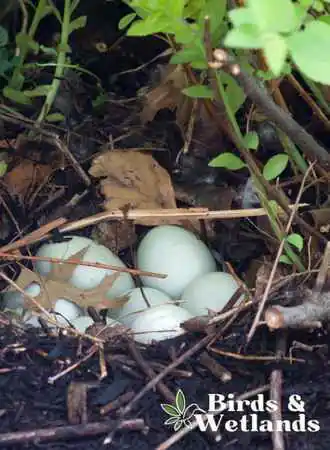
Key Takeaways
- Blue-winged ducks are a group of birds found worldwide with seven species, one being the blue-winged teal.
- Blue-winged teals mainly eat plant material but also supplement their diet with invertebrates during certain seasons.
- Blue-winged teals are among the most abundant ducks in North America.

